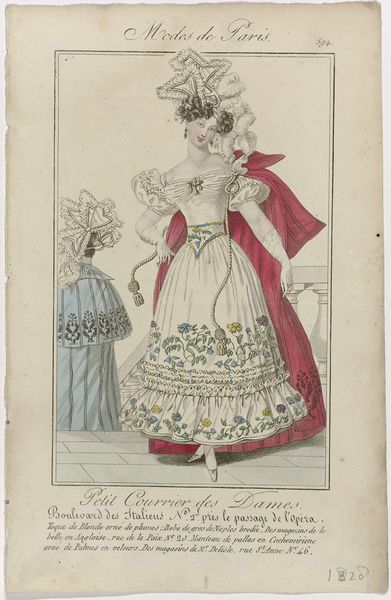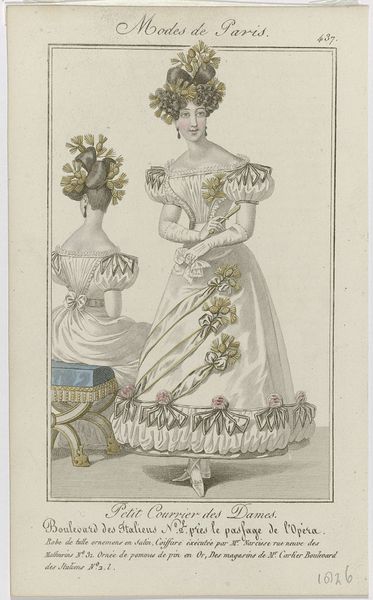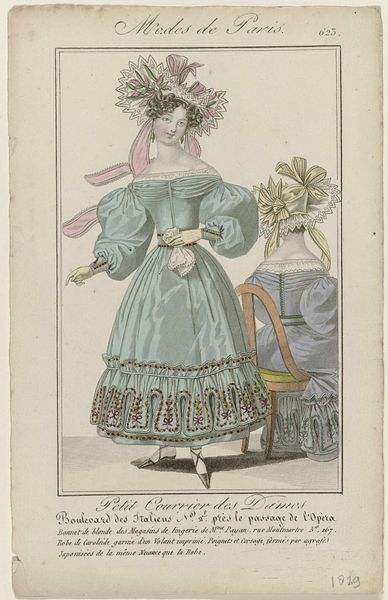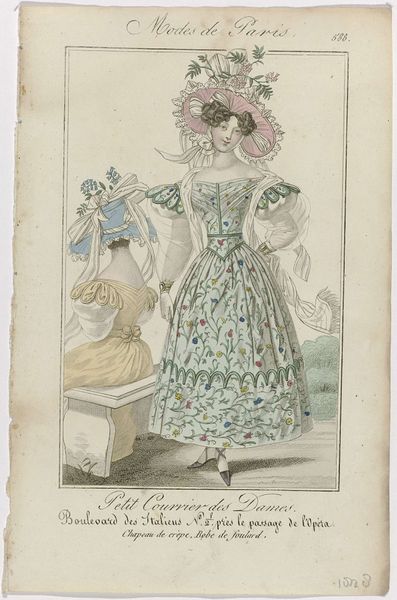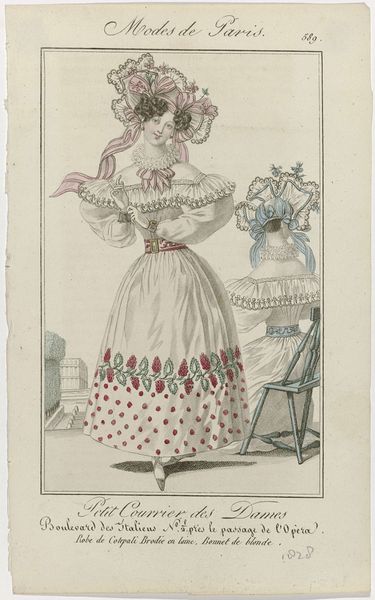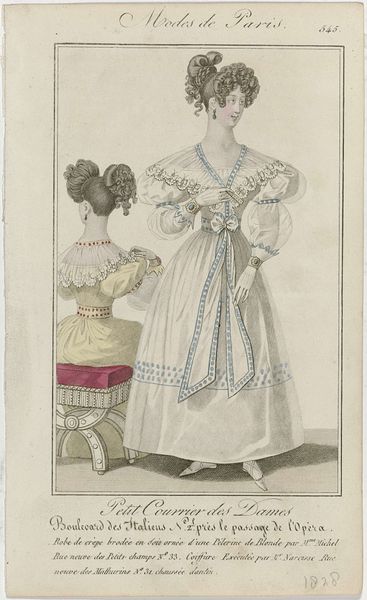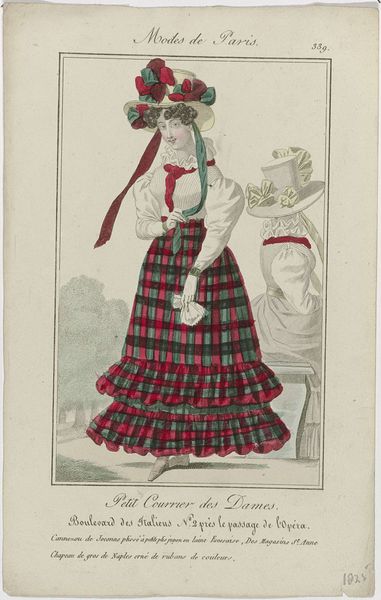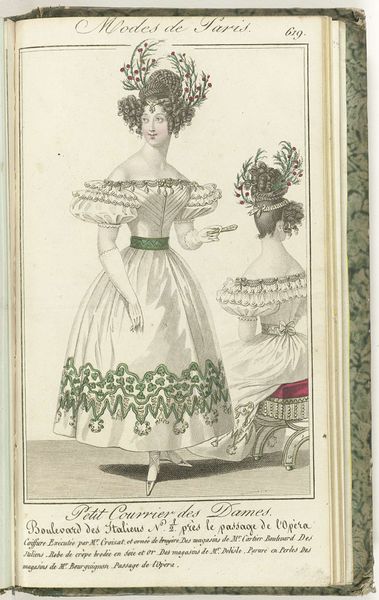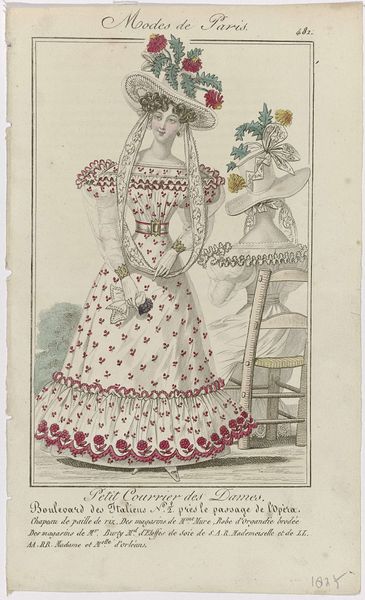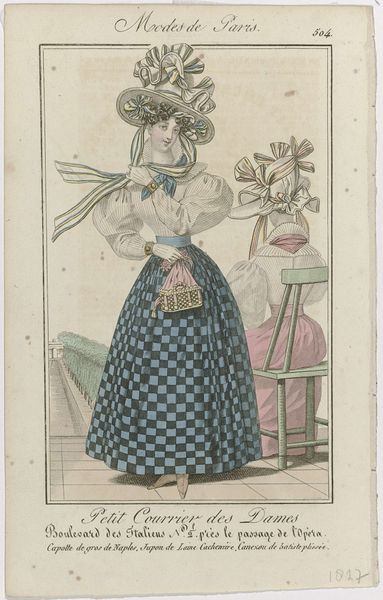
Petit Courrier des Dames, 1826, No. 428 : Costume de bal, Ceinture en rubans (...) 1826
0:00
0:00
print, watercolor
# print
#
figuration
#
watercolor
#
romanticism
#
watercolour illustration
#
watercolor
Dimensions: height 207 mm, width 131 mm
Copyright: Rijks Museum: Open Domain
This fashion plate, published in Paris in 1826, showcases the era's ornate style. The ribbons adorning the lady's hair, dress, and waist, speak to the period's emphasis on embellishment and elegance. Ribbons have been employed for centuries across cultures, with diverse symbolism. In ancient Greece, ribbons, particularly those tied in knots, symbolized love and fidelity, often seen in marriage ceremonies. Medieval Europe saw ribbons used as marks of social status, with colors and materials denoting rank. Here, the ribbons evoke a sense of playful luxury, reflecting the societal values of display and refinement. The cyclical nature of fashion mirrors the eternal return of symbols. Consider how the zig-zag pattern on the skirt echoes motifs found in ancient Greek pottery, embodying both the dynamism of movement and the foundational order of classical design. Such symbols reveal how collective memory subtly guides aesthetic choices, resurfacing in unexpected ways to engage us on a subconscious level.
Comments
No comments
Be the first to comment and join the conversation on the ultimate creative platform.
